| Columns Retired Columns & Blogs |
Having owned some speakers that measure nearly as flat as an amplifier in an anechoic chamber and sound unmusical at home, i'll take VA's musical presentation any day. If only they could get a decent US distributor.
The Beethoven Concert Grand, measured on its tweeter axis without the grille, was of average voltage sensitivity, at an estimated 87.3dB(B)/2.83V/m, though it should be noted that this is significantly below the specified 91dB. The Beethoven is described as a "4 ohm" design, and its impedance remained between 4 and 6 ohms between 20Hz and 1.4kHz. However, as can be seen from the plot of its impedance magnitude and electrical phase against frequency (fig.1), the speaker's load drops to 2.83 ohms at 90Hz, which will stress tube amplifiers, given how much musical energy can be present at that frequency. Higher in frequency, the impedance in the treble is generally higher than it is in the midrange; with tube amplifiers, this will tilt the response up a little at high frequencies.
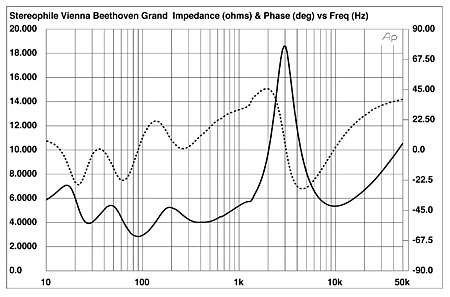
Fig.1 Vienna Acoustics Beethoven Concert Grand, electrical impedance (solid) and phase (dashed). (2 ohms/vertical div.)
The impedance traces are free from the small glitches in the midrange that would suggest the existence of vibrational resonances in the cabinet walls. However, there is a suspicious-looking discontinuity around 1.2kHz. Investigating the matter with a simple accelerometer revealed the large cabinet to have some resonant modes present around 600Hz, particularly on the upper part of the sidewall (fig.2). However, because higher-frequency resonances tend to decay faster than lower-frequency ones, and because the higher in frequency a resonance is the more likely it will "fall between the cracks" in Western-pitch music, it is possible that this behavior looks worse than it sounds.
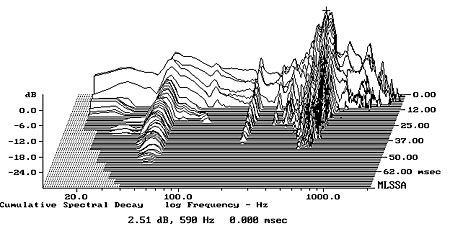
Fig.2 Vienna Acoustics Beethoven Concert Grand, cumulative spectral-decay plot calculated from the output of an accelerometer fastened to the cabinet's side panel level with the midrange unit (MLS driving voltage to speaker, 7.55V; measurement bandwidth, 2kHz).
In the frequency domain, I examined the nearfield output of all three woofers and both of the rear-panel ports (fig.3). The behavior of the ports appeared to be identical within their nominal passbands, though the upper port had a little more spurious midrange energy than the lower one. The lower two woofers rolled off a little lower in frequency than the topmost one, but were otherwise tuned identically. The saddle at 27Hz in the impedance trace (fig.1) suggests that this is the tuning frequency of the ports. While the summed output of the ports does peak in the octave between 20Hz and 40Hz, the minimum-motion notch in the summed outputs of the woofers occurs a little higher in frequency, at 31Hz. The relative levels of the summed woofer and port outputs, scaled in the ratio of the square root of the total radiating areas, suggest that the ports don't effectively extend the Beethoven Concert Grand's low-frequency response. In-room, however, the proximity of the Beethoven's lower port to the floor will boost its level somewhat. I note that Mikey did find that the speaker's bass sounded extended.
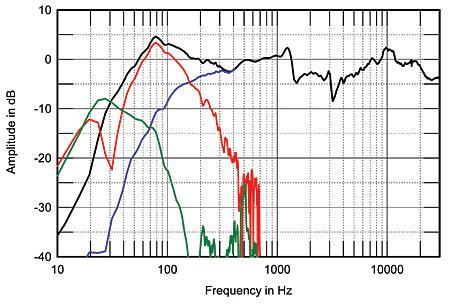
Fig.3 Vienna Acoustics Beethoven Concert Grand, anechoic response on tweeter axis at 50", averaged across 30° horizontal window and corrected for microphone response, with the nearfield responses of the midrange unit (blue), woofers (red), ports (green), and their complex sum (black).
Higher in frequency, the summed woofer response peaks between 60Hz and 125Hz, which will in part be an artifact of the nearfield measurement technique. The crossover to the midrange unit appears to occur at around 160Hz, with second-order slopes. I do wonder if the fact that the relatively small-diameter midrange cone is being asked to handle upper-bass frequencies leads to the limited dynamic range MF noted in his auditioning. There is an apparent lack of energy in the lower mids, but more important, a sharp step is apparent in the midrange unit's upper-range output, this probably not coincidentally the frequency of the impedance discontinuity, above which the low and mid-treble are shelved down by up to 5dB. MF did mention the recessed presence region and described the Beethoven's balance as a "somewhat laid-back, enriched harmonic presentation," which is just what I would have predicted from the speaker's on-axis response. In addition, my experience with speakers having a balance with a relative lack of presence-region energy is that you want to keep turning up the volume, but the speaker never sounds quite "loud" enough.
The on-axis peak between 8kHz and 12kHz could be heard on pink noise, accentuated by the lack of energy in the two octaves below. But when listening to music in a small room, it's possible that that peak will subjectively compensate to some extent for the 1" soft-dome tweeter's increased directivity in its top octave (fig.4). Note also in this graph the slight flare at the base of the tweeter's passband, which coincides with a slight suckout in the on-axis response. Other than that, the horizontal radiation pattern is generally uniform.
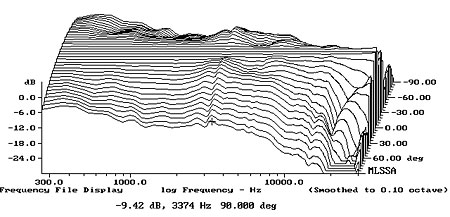
Fig.4 Vienna Acoustics Beethoven Concert Grand, lateral response family at 50", normalized to response on tweeter axis, from back to front: differences in response 90–5° off axis, reference response, differences in response 5–90° off axis.
In the vertical plane (fig.5), a sharp suckout for axes above the tweeter develops at 3.1kHz, which I assume is the upper crossover frequency. However, this graph also shows that the low treble's lack of energy fills in a little for listening axes below the midrange unit. Sitting low might produce a better tonal balance than sitting on the 40"-high tweeter axis. Fig.6 shows the spatially averaged response in Mikey Fremer's listening room: it doesn't hold any surprises, though it is worth commenting on the flatness of the treble balance. I could hear the slight excess of mid-treble energy on pink noise, but not to any great extent on music. The bass is extended and the transition from the upper bass through to the midrange is well-balanced. The elephant in the room, of course, is that broad plateau in the upper midrange, followed by the 3dB step down to the treble. I could hear this as a slight nasal coloration on pink noise.
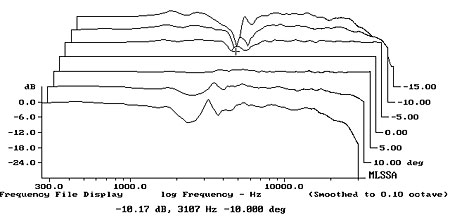
Fig.5 Vienna Acoustics Beethoven Concert Grand, vertical response family at 50", normalized to response on tweeter axis, from back to front: differences in response 15–5° above axis, reference response, differences in response 5–15° below axis.
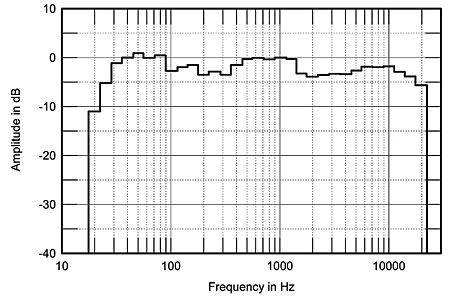
Fig.6 Vienna Acoustics Beethoven Concert Grand, spatially averaged, 1/3-octave response in MF's listening room.
In the time domain, the Beethoven's step response on the tweeter axis (fig.7) indicates that the tweeter and midrange units are connected in positive acoustic polarity, but that the woofers are connected in inverted polarity, this confirmed by looking at the drive-units' individual step responses. What appears to be low-frequency ringing in the tail of the step between the 5ms and 7ms marks is actually due to the different arrival times of the three woofers at this microphone position. This will be less of an issue at greater distances, but I do wonder if it results in the slight lack of lower-midrange energy in the Beethoven's on-axis response.
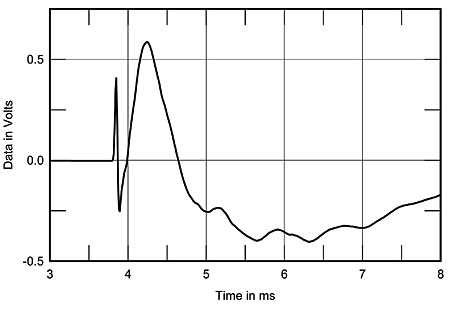
Fig.7 Vienna Acoustics Beethoven Concert Grand, step response on tweeter axis at 50" (5ms time window, 30kHz bandwidth).
The Beethoven's cumulative spectral-decay plot (fig.8) is superbly clean in the tweeter region, but is disturbed by two resonances at the top of the midrange unit's passband, both associated with small peaks in the on-axis response. I would have expected that this, together with the step down above the lower-frequency resonance, would add some nasal coloration and low-treble hardness to the speaker's balance. In fact, I suspect that it might be these resonances that contribute more to the speaker's limited dynamic range than the midrange unit's extended upper-bass response.
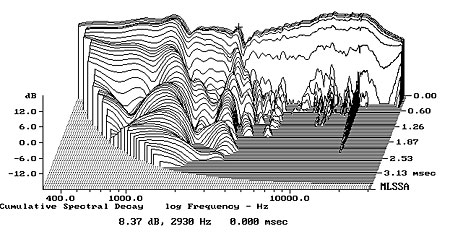
Fig.8 Vienna Acoustics Beethoven Concert Grand, cumulative spectral-decay plot at 50" (0.15ms risetime).
I was disappointed in the Beethoven Concert Grand's measured performance. I had expected more, both from Michael's auditioning impressions and from my experience of earlier Vienna Acoustics models. The Beethoven does offer superbly extended in-room low frequencies, however, and its laid-back tonal balance will be appreciated by many listeners who find most recordings too much in their faces. Perhaps this is why Michael's friend described the Beethoven as a "music lover's speaker" rather than one aimed at audiophiles.— John Atkinson

Having owned some speakers that measure nearly as flat as an amplifier in an anechoic chamber and sound unmusical at home, i'll take VA's musical presentation any day. If only they could get a decent US distributor.